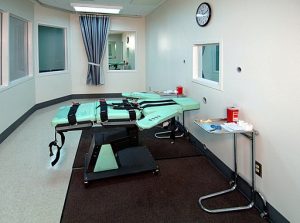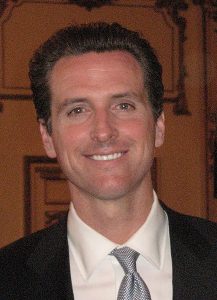Gov. Gavin Newsom, in a passionate defense of his moratorium on use of the death penalty in California, pointed Tuesday to well-documented inequities in the criminal justice system that helped lead him to his decision.

The process that places convicts on Death Row is “error prone,” Newsom said in a telebriefing with members of the ethnic media. “I think it’s a racist system that disproportionally affects black and brown people.”
Newsom told journalists belonging to the Ethnic Media Services network that economic and geographic inequities in the criminal justice system also played a role in his decision, as well as practical and moral considerations.
Newsom’s moratorium effectively shuts down the death chamber at San Quentin State Prison and grants 737 inmates that belong to the largest Death Row in the Western Hemisphere a reprieve during his time in office.
Three people from Butte County are on Death Row, according to a report by KRCR TV; there are a total of 10 people there from the North State.
Newsom emphasized, though, that the Death Row prisoners won’t be released. The governor said he had reviewed “in gruesome, horrific detail” 230 of the crimes that landed inmates on Death Row.
“I’m not arguing against the heinous nature of these crimes,” Newsom stated. “I don’t do this lightly.”

Since 1973, 164 Death Row prisoners in this country were exonerated – in some cases by new evidence — including five people from California. “Not surprisingly,” Newsom noted, “all were people of color.”
African-Americans make up only 6.5 percent of the state’s population, according to the U.S. Census, but 36 percent of all of California’s Death Row inmates. Native Americans – there are 11 on the state’s Death Row – are also over-represented. People of color are 66.4 percent of all Death Row inmates in the state.
People with mental disabilities or inadequate legal representation are also more likely to end up on Death Row.
Research suggests a statistical likelihood that up to 30 people on California’s Death Row were wrongly convicted. “As governor,” Newsom said, he could become “directly and individually responsible for the deaths of [those] 30 people.”
Newsom is also troubled by the death penalty itself and said it affects everyone involved in the process, including jurors and guards. The process of giving an inmate a “final meal, strapping them in and killing them in a premeditative manner… we’ve heard from guards that have been impacted forever. The perversity of this impacts people often in ways we don’t consider.”
Although there have been no executions in California since 2006, 25 of the state’s Death Row inmates have now exhausted their right to appeals.
Newsom said there’s a practical consideration as well: The state spends billions of dollars as defendants fighting death sentences pass through the appeals system.
“There is an administration of death,” he said, that “consumes court time and the criminal justice system and exhausts the soul and the pocketbook.”
Asked what would happen to Death Row inmates, Newsom indicated his administration is examining whether their sentences could be commuted to life without possibility of parole.
Leslie Layton is editor of ChicoSol, which belongs to the Ethnic Media Services network.
